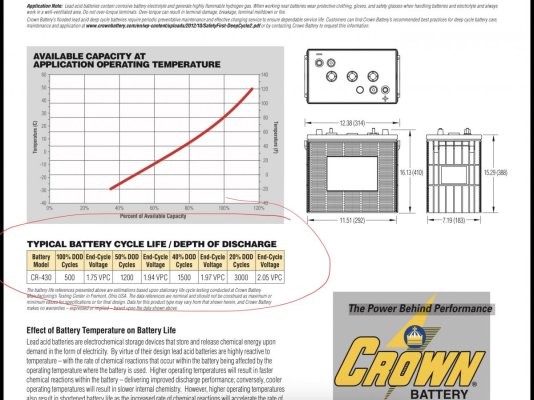JDCAVE,
You could time the coffee making for when you have the generator running each morning to charge the batteries.
How old are your batteries now?
I assume the start batteries are not part of the house system. The generator battery is independent to the house batteries too.
Even if you drain your house batteries over night, you can still start your generator to recharge the batteries and make coffee at the same time.
If you are in the habit of starting your main engine and you have it piped to heat the water in the tank, you can shut off the electric to the HW tank too.
As I recall, I can go almost 2 day on the 3X4D batteries. (3X200 AGM) Of course all I have running it the 12 vt fridge and lights and a couple of small inverter to run the TVs.
I do have 2X130 solar panels to help out.
My inverter is only 1800watt inverter but something about a +10% buffer.
It is fun/scary, when I put the microwave (1200 watt) on the inverter, watching the house battery voltage take a nose dive. The voltage always jumps back up to an acceptable range if I am careful.
I doubt, in my life time, will we see our boats living totally off the grid for extended periods of time. (no engine, no generator)
Even the "test" total electric boats, have a forest of solar panels, a mountain of batteries and a generator.

